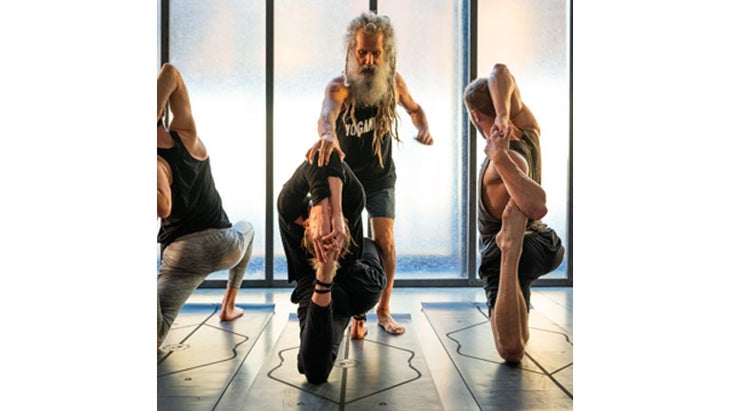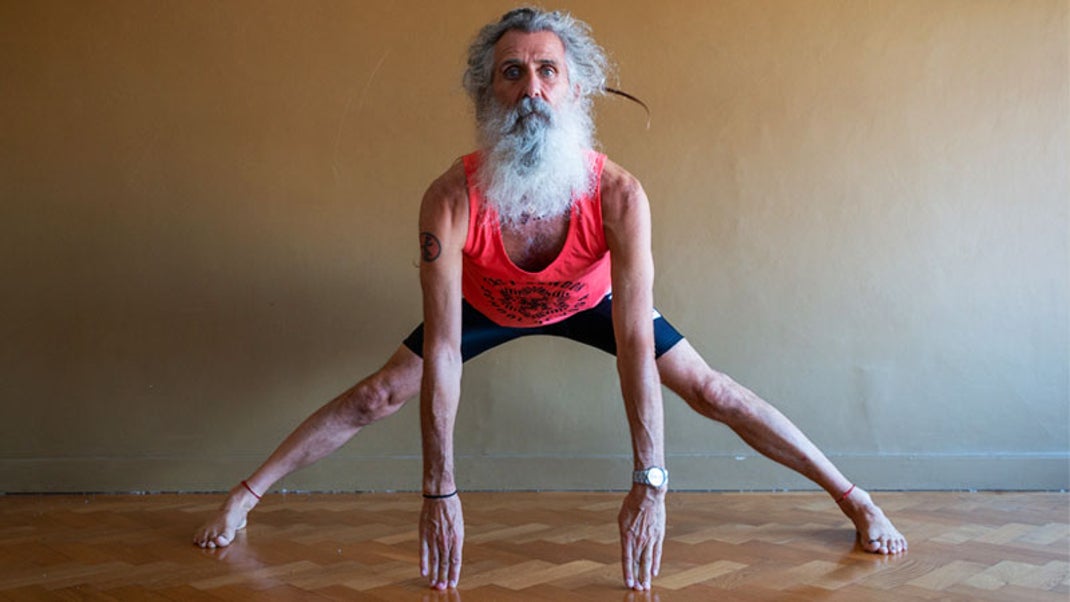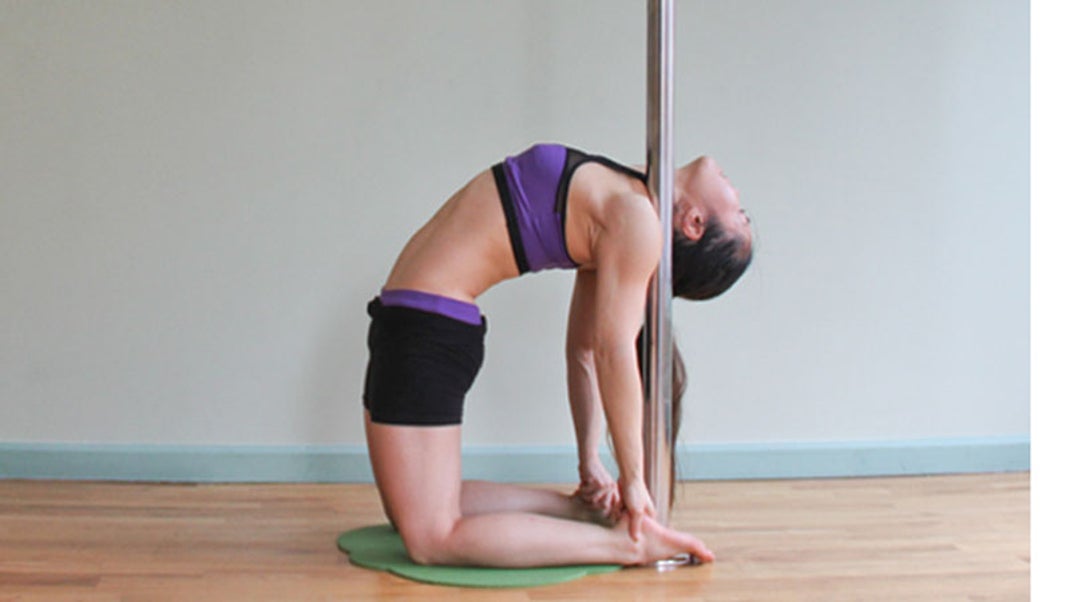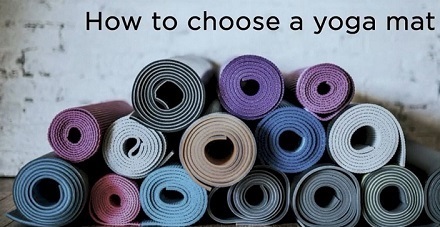Yoga is a difficult practice. How do you know if your alignment is correct? How do you know if the poses are doing what they’re supposed to be doing? How can I take my practice deeper so that I can finally escape this cycle of birth and death? These are all questions that plague the minds of yoga students, but now there’s an answer! Live Be Yoga: Finally, a Yoga Teacher Explains How Double-Dip Chaturangas Lead to Liberation takes you through the process of mastering your asana in order to achieve liberation from samsara.”
Live to Be Yoga ambassadors Jeremy Falk and Aris Seaberg are on a road trip across the country to share real talk with master teachers, explore innovative classes, and so much more—all to illuminate what’s in store for the future of yoga
A sinewy 57-year-old man with long grey dreadlocks and a heavy Scottish accent paces back and forth across the studio at Blok, a trendy gym in London that offers 27 different styles of fitness classes. At the onset of class, we sit in meditation as Gilchrist reminds us that yoga is an ancient philosophy on life—not a workout.
Yet midway through class, as buckets of sweat drip down my body, I realize that this is one of the most physically challenging classes I’ve ever taken. It seems paradoxical to preach philosophy over fitness before prescribing boot camp-style, double-dip Chaturangas, but Stewart Gilchrist ultimately showed us why the future of yoga needs both in its approach.
Gilchrist has an eclectic background: He carries a law degree; he’s worked for big companies like IBM, at small nonprofit youth organizations, and even as a head waiter in Paris. He was also once heavy into London’s drug and music scene and lived as a squatter in abandoned buildings. One fateful night as he was hopping fences through back alleys, he took a fall and fractured his spine in several places, which nearly broke his back. After self-medicating with illegal narcotics, his girlfriend ultimately persuaded him to try yoga.
That’s when he found his way into an Ashtanga studio. “They were the first people to give me freedom, in my head as well as in my body,” Gilchrist recalls. “True freedom—not political or philosophical freedom—but true freedom. Freedom from all the bullshit conditioning that’s been put in your head since you’ve been little.”
Tasting this liberation for the first time, he eventually broke free from his addictions, practiced rigorous Ashtanga daily for the next 5 years, and was ultimately certified in Jivamukti. He also fell in love with studying ancient texts like the Gheranda Samhita, Shiva Samhita, Mahabharata, Upanishads, and Bhagavad Gita.

“The essence of yoga can be understood from reading those texts, which teach us how to live a practical life and be of service. Yoga is about being of service,” he told us after class, and this is how he found his liberation. Transformed, Gilchrist has taught yoga since 2001 and has been drug- and alcohol-free for over 20 years.
So, in the midst of one of the toughest classes I’ve ever taken, he is adamant that we do not reduce this practice to mere wellness. “I just hope that people who come here for the asana will one day lift up a book and start reading big texts, not bite-sized texts. I hope that people will escape from reducing it to a health-crazed thing, which is totally self-defeating because as soon as one health-crazed thing finishes, another takes over,” he says. “Yoga risks becoming just another health craze on the platform of step aerobics and Zumba.”
And it’s true; wellness trends come and go, but philosophies are immortal. Therefore, I also believe it is imperative that we teach yoga as a philosophy so that it continues to transform society and does not disappear in the canon of fitness fads. Like the philosophy behind the Bhagavad Gita, which urges us to fulfill our dharma (purpose) in service to the world, it frames yoga as something bigger than ourselves, ensuring its immortality. And this, Gilchrist points out, is the paradoxical explanation of why he teaches philosophy alongside his notoriously tough classes.
“The reason the body should be strong is so that you can be of service to other people. If your body is reasonably healthy and fit, as you grow older you’ll find yourself still being of service to other people instead of them looking after you. That’s where it becomes convergent with a hard asana class,” he says.
Gilchrist’s perspective acknowledges all aspects of yoga, placing importance on both studying and sweating, and refuses to let yoga be reduced to either one. “You can use the disciplined asana practice to show people, physically, it’s in their interest; then you can instill the philosophy in them,” he says. “At the same time, it’s not just something you can study. It’s something you do on the street, and you live every day of your life with it.”
As we continue to illuminate the important issues facing the future of yoga, Gilchrist has made it evident that we must read the texts to liberate ourselves from suffering, and we ought to practice to our edge, whatever that looks like, so we can remain in service as long as possible and liberate each other.
Namaste to Our Partner
Special thanks to our friends at Nutiva, whose yogi-friendly vegan organic superfood protein smoothies help us recover quickly to stand even stronger in service and share stories like this one.
Conclusion:
I believe it is imperative that we teach yoga as a philosophy so that it continues to transform society and does not disappear in the canon of fitness fads. Like the philosophy behind the Bhagavad Gita, which urges us to fulfill our dharma (purpose) in service to the world, yoga can be used as something bigger than ourselves ensuring its immortality. And this, Gilchrist points out, is why he teaches both asana and philosophy alongside his notoriously tough classes.



